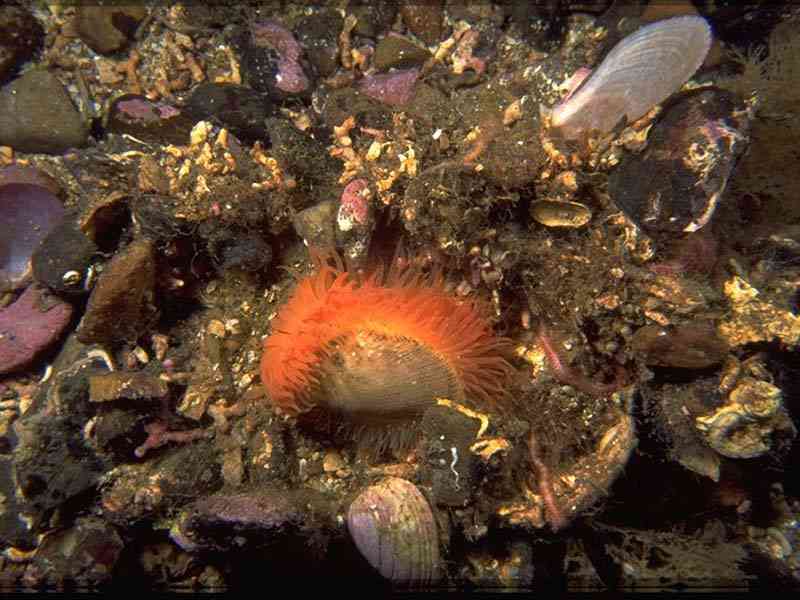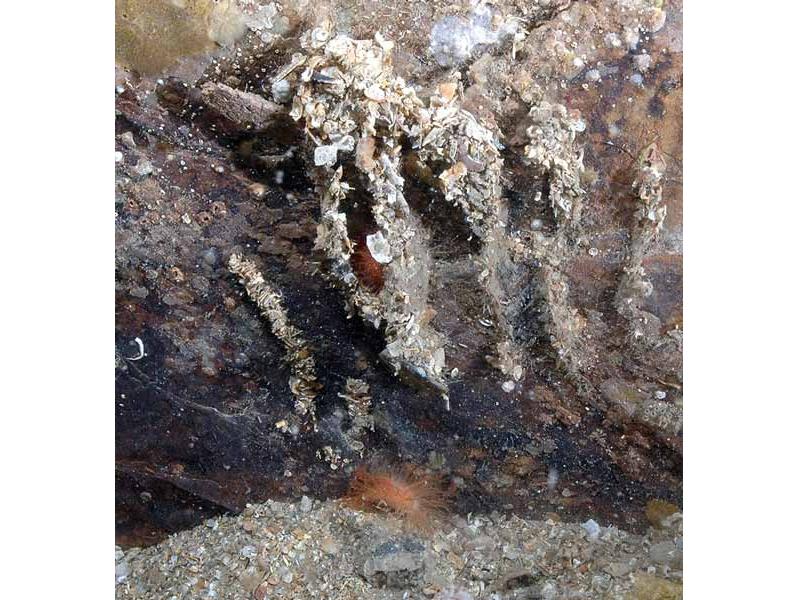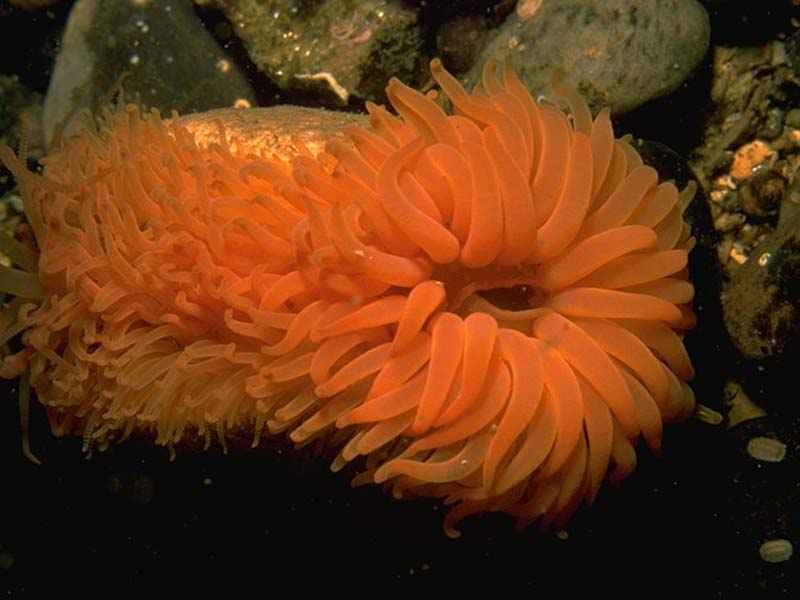Gaping file shell (Limaria hians)
Distribution data supplied by the Ocean Biodiversity Information System (OBIS). To interrogate UK data visit the NBN Atlas.Map Help
| Researched by | Dr Harvey Tyler-Walters | Refereed by | Admin |
| Authority | (Gmelin, 1791) | ||
| Other common names | - | Synonyms | Lima hians (Gmelin, 1791) |
Summary
Description
Recorded distribution in Britain and Ireland
Patchy records from off Plymouth Sound, Skokholm, southern Isle of Man, western coasts and lochs of Scotland, and Mulroy Bay, Northern Ireland.Global distribution
Recorded from the Lofoten Isles Norway, Iceland, south to the Iberian Peninsula, the Mediterranean, Canary Isles and Azores.Habitat
Found from low water to ca 100 m on coarse sand, gravel, broken shells and stones. It may occupy 'nests' of byssus threads among rubble, under stones or in the holdfasts of laminarians. When abundant, the 'nests' may coalesce to form a carpet or reef over shell-sand, which may provide a substratum for kelps.Depth range
Lower shore to ca 100mIdentifying features
- Mantle edge bears numerous, conspicuous red and orange contractile tentacles.
- Hinge line drawn out into 'ears'.
- Shell, oval in outline, inequilateral, usually white and bearing ca 50 radiating ribs.
- Shell gapes prominently on each side.
- Builds byssus nests.
Additional information
No text enteredListed by
- none -
Bibliography
Allen, J.A. 1962. The fauna of the Clyde Sea area. Mollusca. Millport: Scottish Marine Biological Association.
Bruce, J.R., Colman, J.S. & Jones, N.S., 1963. Marine fauna of the Isle of Man. Liverpool: Liverpool University Press.
Crothers, J.H. (ed.), 1966. Dale Fort Marine Fauna. London: Field Studies Council.
Fish, J.D. & Fish, S., 1996. A student's guide to the seashore. Cambridge: Cambridge University Press.
Gilchrist, J.D.F., 1896. Lima hians and its mode of life. Transactions of the Natural History Society of Glasgow, 4, 218-225.
Hall-Spencer, J.M. & Moore, P.G., 2000a. Impact of scallop dredging on maerl grounds. In Effects of fishing on non-target species and habitats. (ed. M.J. Kaiser & S.J., de Groot) 105-117. Oxford: Blackwell Science.
Hall-Spencer, J.M. & Moore, P.G., 2000b. Limaria hians (Mollusca: Limacea): A neglected reef-forming keystone species. Aquatic Conservation: Marine and Freshwater Ecosystems, 10, 267-278.
Hall-Spencer, J.M. & Moore, P.G., 2000c. Scallop dredging has profound, long-term impacts on maerl habitats. ICES Journal of Marine Science, 57, 1407-1415.
Hayward, P., Nelson-Smith, T. & Shields, C. 1996. Collins pocket guide. Sea shore of Britain and northern Europe. London: HarperCollins.
Hayward, P.J. & Ryland, J.S. (ed.) 1995b. Handbook of the marine fauna of North-West Europe. Oxford: Oxford University Press.
Howson, C.M. & Picton, B.E., 1997. The species directory of the marine fauna and flora of the British Isles and surrounding seas. Belfast: Ulster Museum. [Ulster Museum publication, no. 276.]
JNCC (Joint Nature Conservation Committee), 1999. Marine Environment Resource Mapping And Information Database (MERMAID): Marine Nature Conservation Review Survey Database. [on-line] http://www.jncc.gov.uk/mermaid
MBA (Marine Biological Association), 1957. Plymouth Marine Fauna. Plymouth: Marine Biological Association of the United Kingdom.
Minchin, D., 1995. Recovery of a population of the flame shell, Lima hians, in an Irish bay previously contaminated with TBT. Environmental Pollution, 90, 259-262.
Tebble, N., 1976. British Bivalve Seashells. A Handbook for Identification, 2nd ed. Edinburgh: British Museum (Natural History), Her Majesty's Stationary Office.
Waren, A., 1989. New and little known Mollusca from Iceland. Sarsia, 74, 1-28.
Datasets
Centre for Environmental Data and Recording, 2018. Ulster Museum Marine Surveys of Northern Ireland Coastal Waters. Occurrence dataset https://www.nmni.com/CEDaR/CEDaR-Centre-for-Environmental-Data-and-Recording.aspx accessed via NBNAtlas.org on 2018-09-25.
Conchological Society of Great Britain & Ireland, 2018. Mollusc (marine) data for Great Britain and Ireland - restricted access. Occurrence dataset: https://doi.org/10.15468/4bsawx accessed via GBIF.org on 2018-09-25.
Conchological Society of Great Britain & Ireland, 2023. Mollusc (marine) records for Great Britain and Ireland. Occurrence dataset: https://doi.org/10.15468/aurwcz accessed via GBIF.org on 2024-09-27.
Fenwick, 2018. Aphotomarine. Occurrence dataset http://www.aphotomarine.com/index.html Accessed via NBNAtlas.org on 2018-10-01
NBN (National Biodiversity Network) Atlas. Available from: https://www.nbnatlas.org.
OBIS (Ocean Biodiversity Information System), 2025. Global map of species distribution using gridded data. Available from: Ocean Biogeographic Information System. www.iobis.org. Accessed: 2025-08-01
Citation
This review can be cited as:
Last Updated: 17/04/2008






